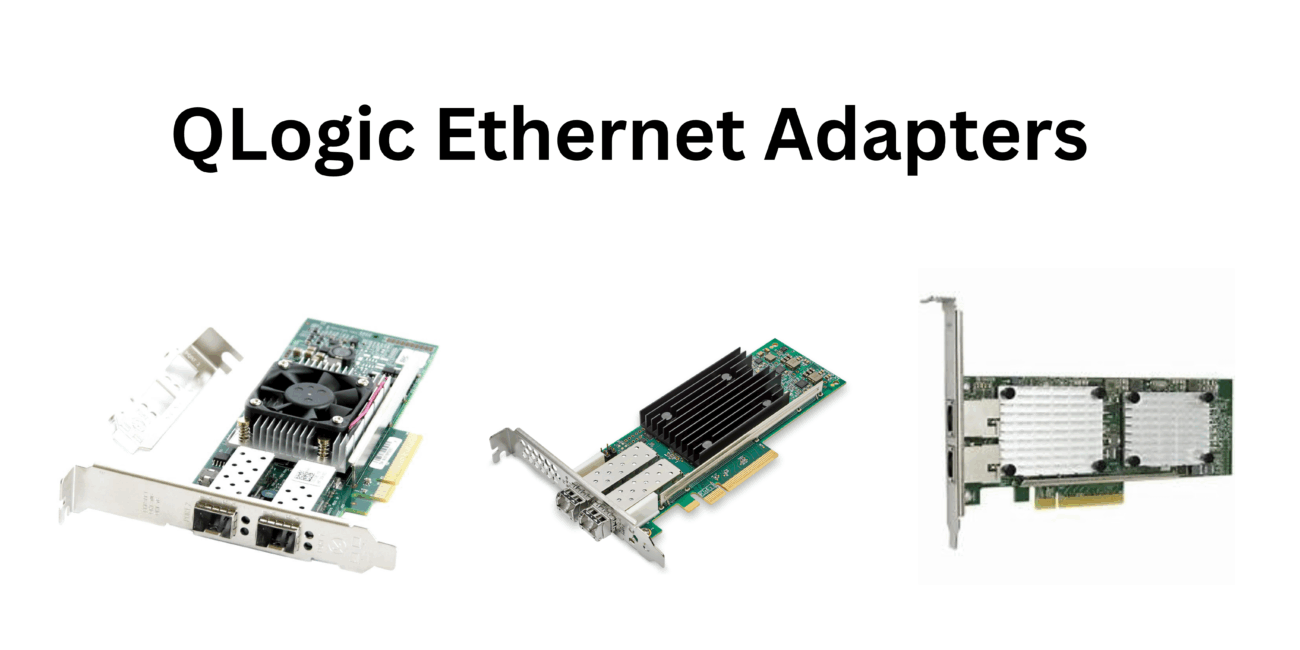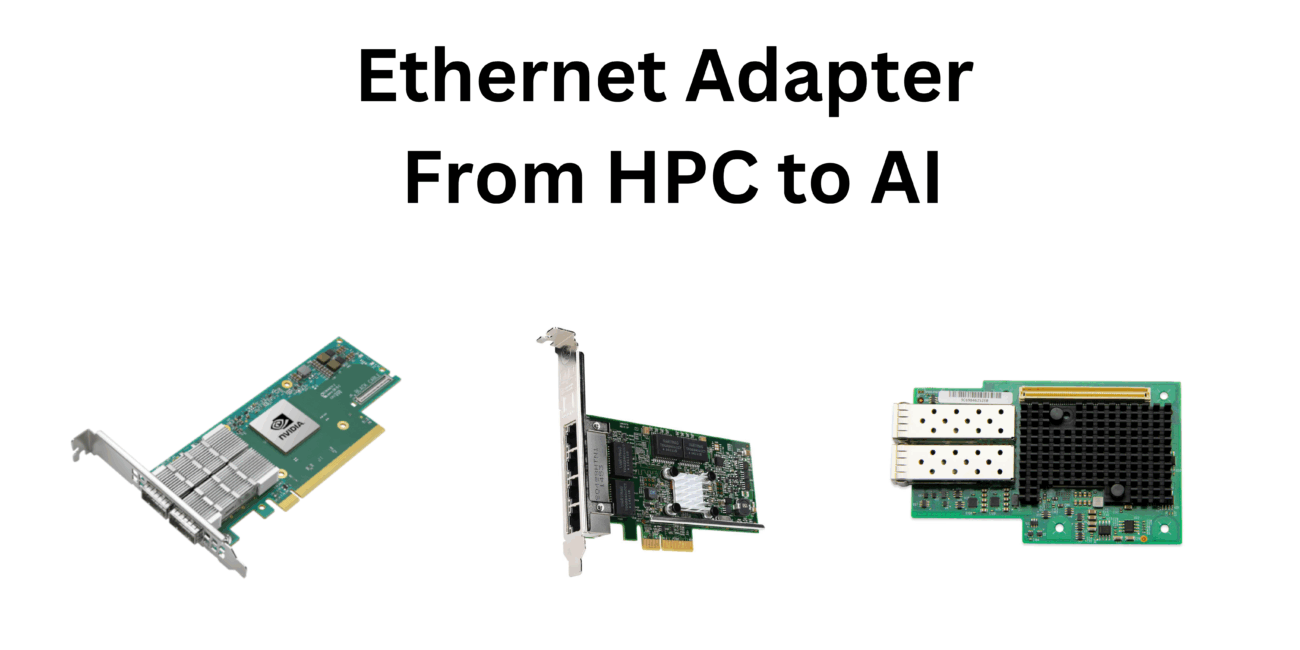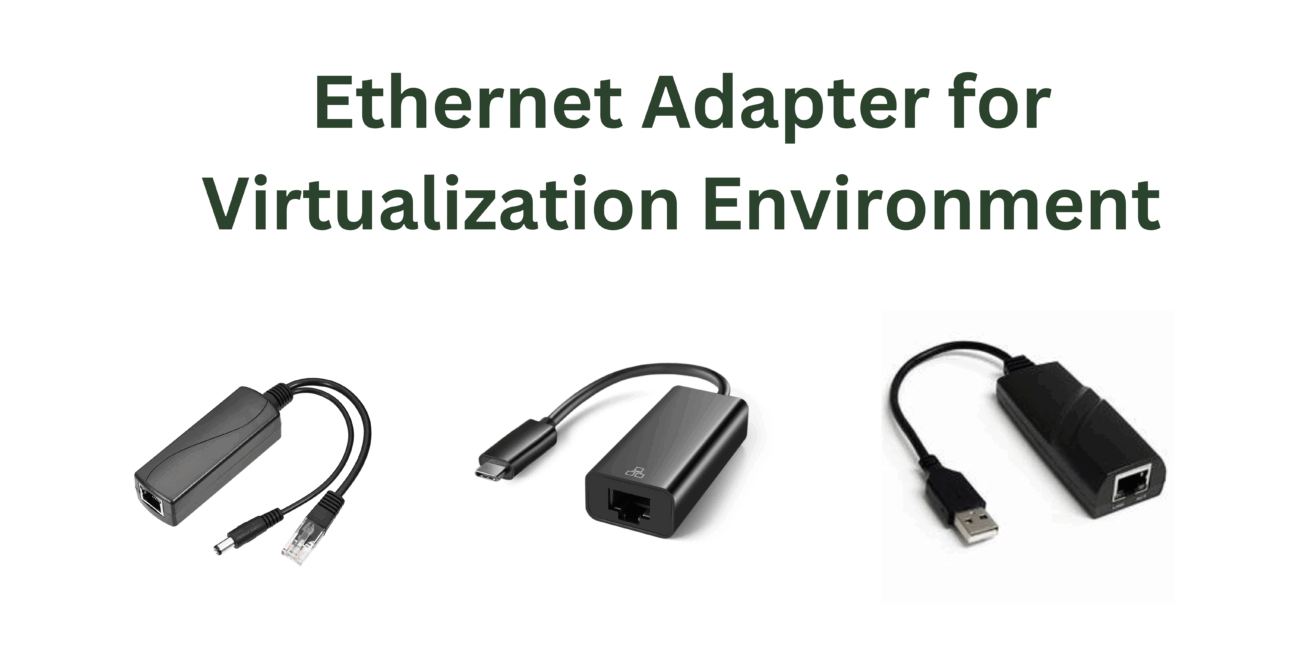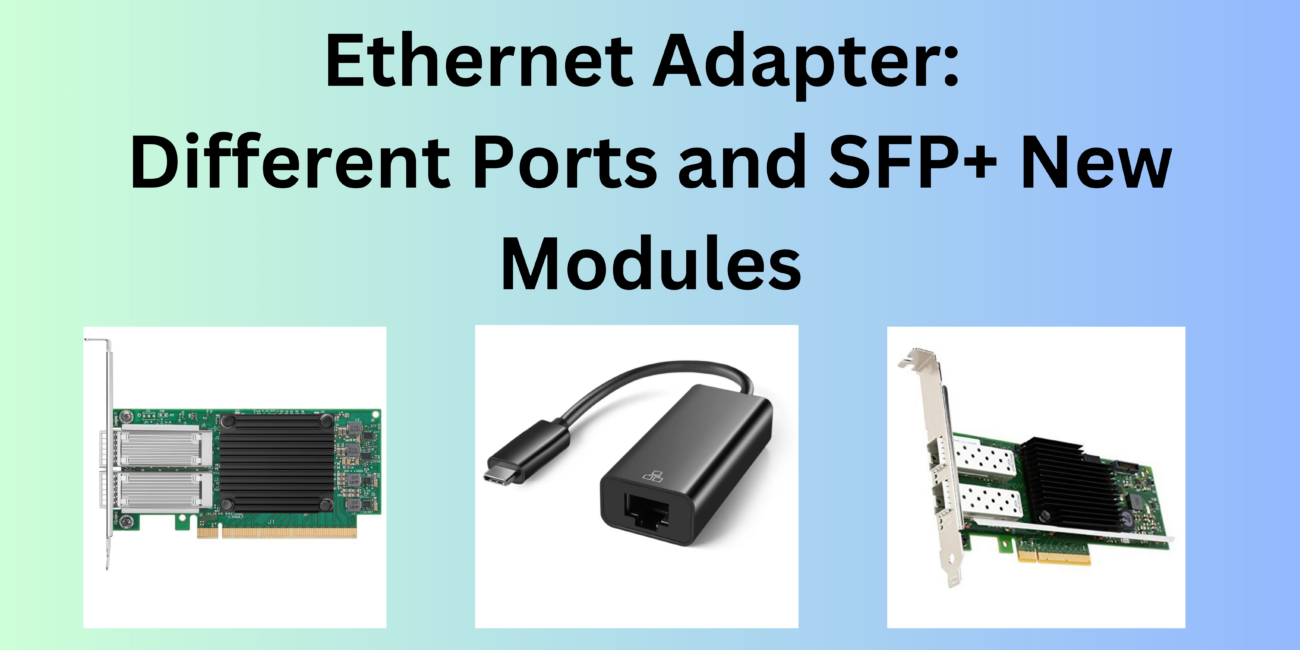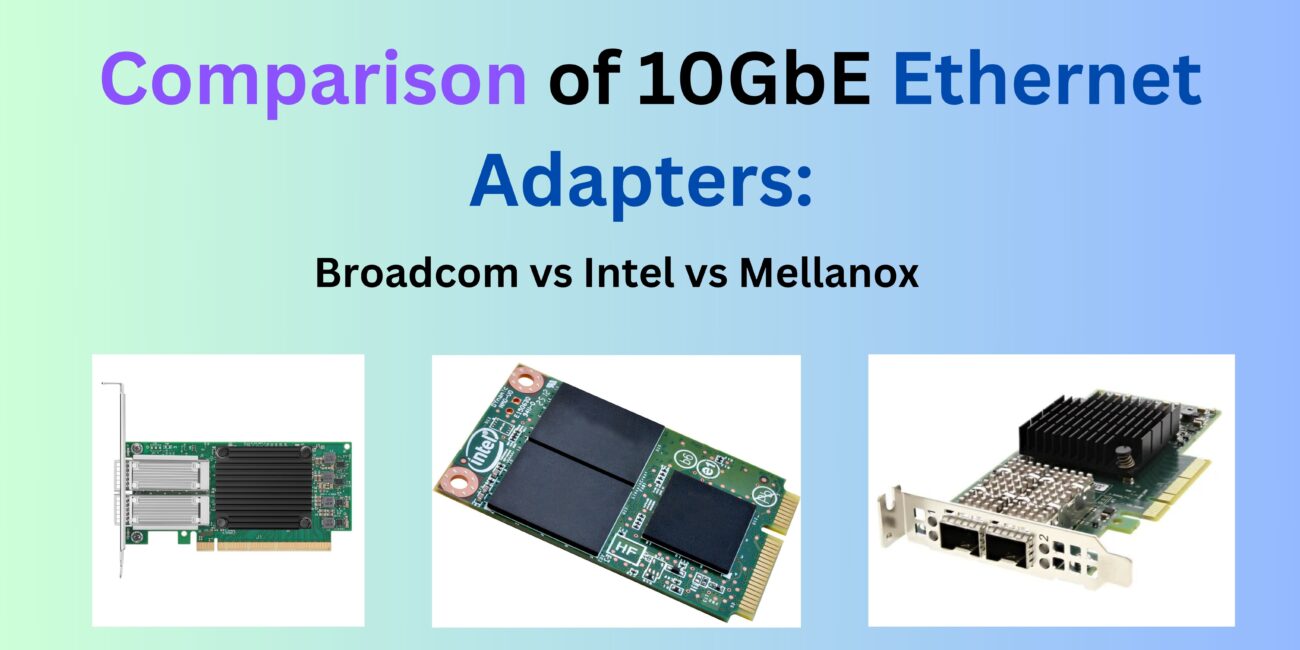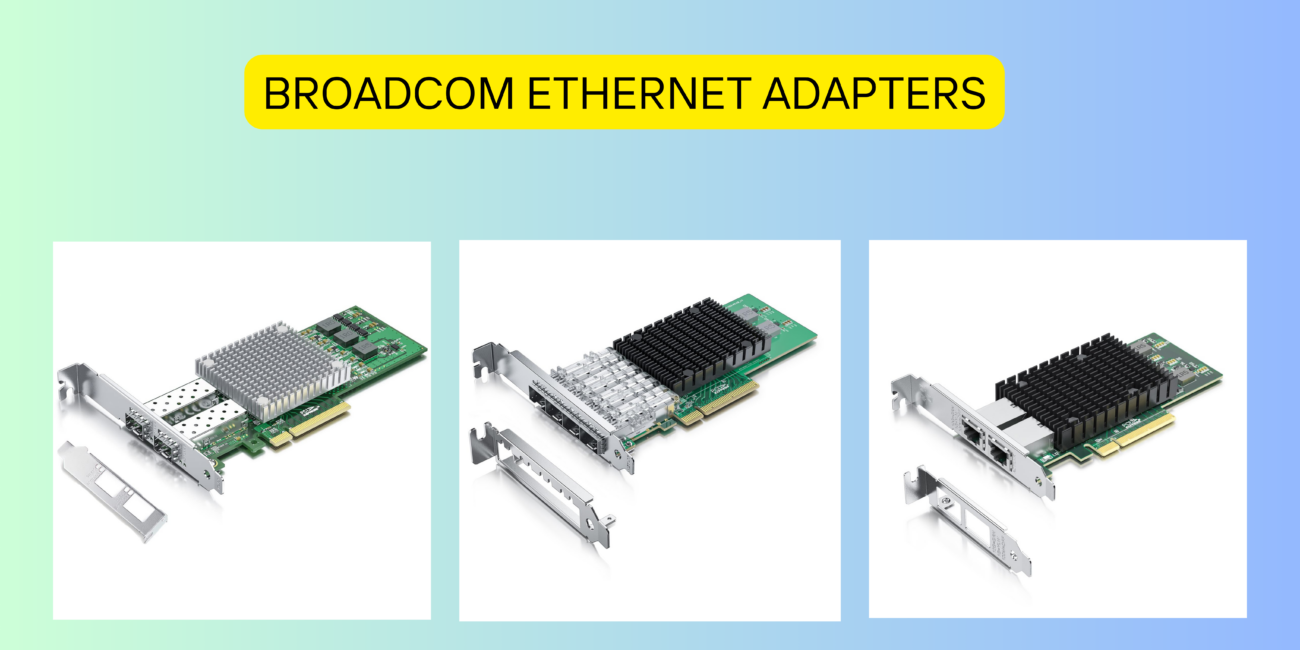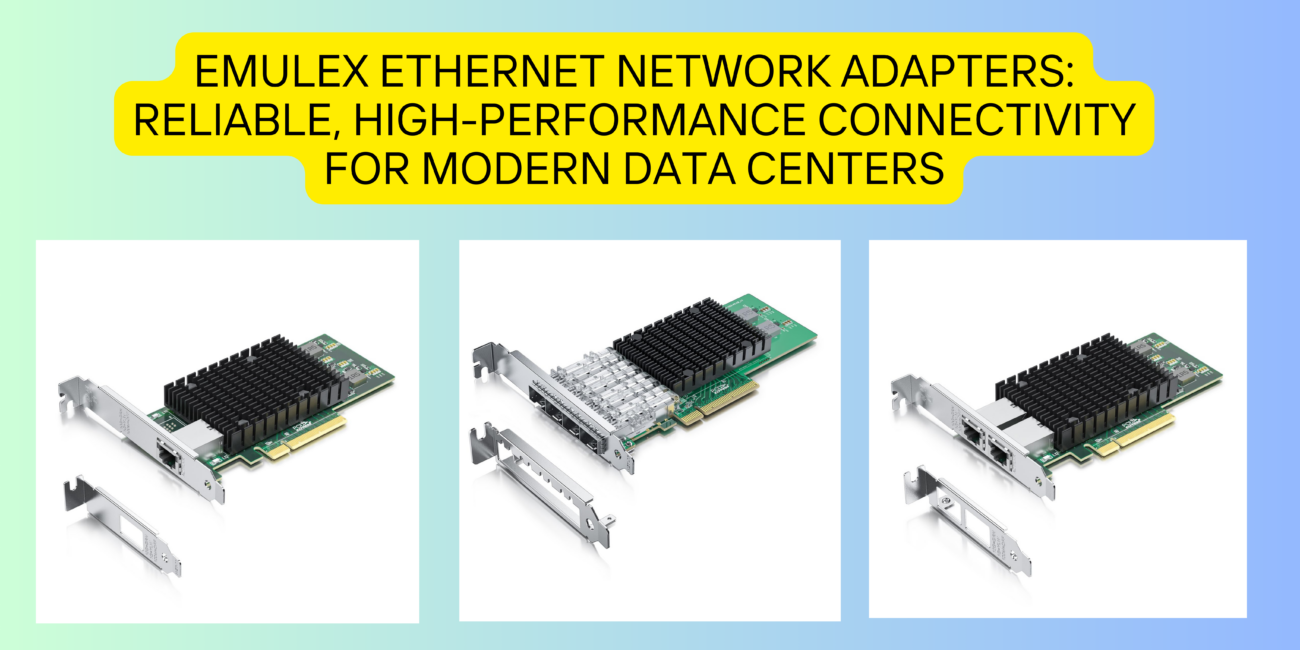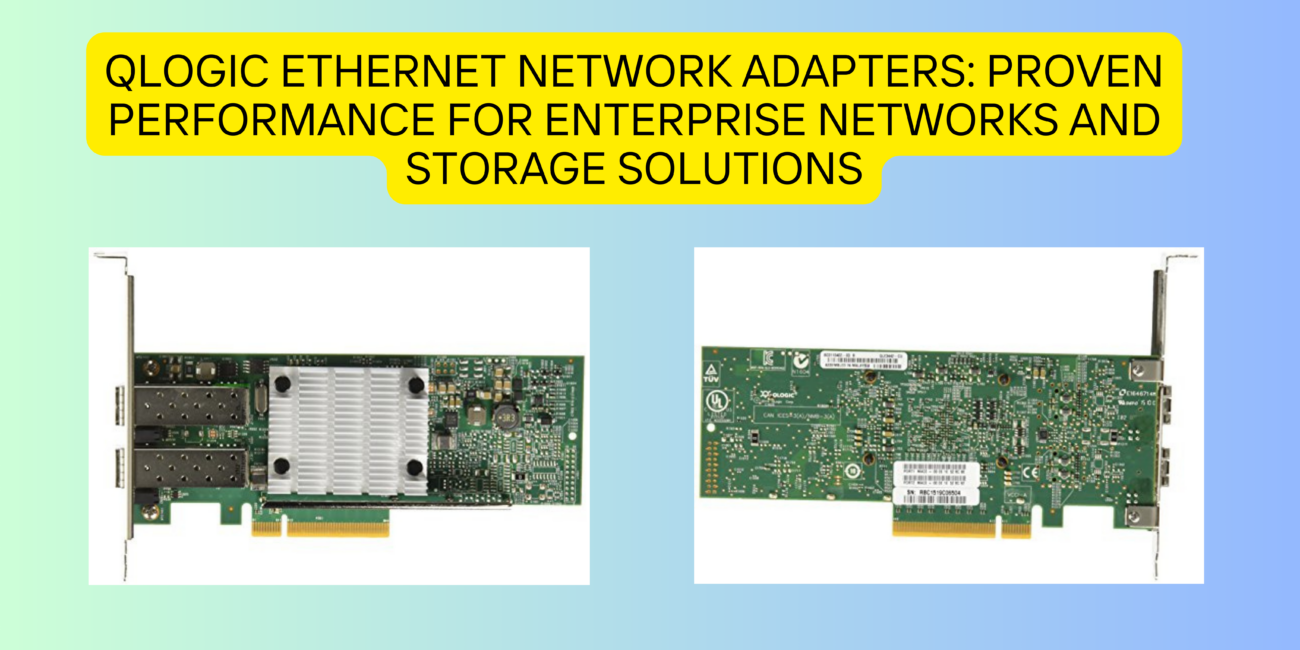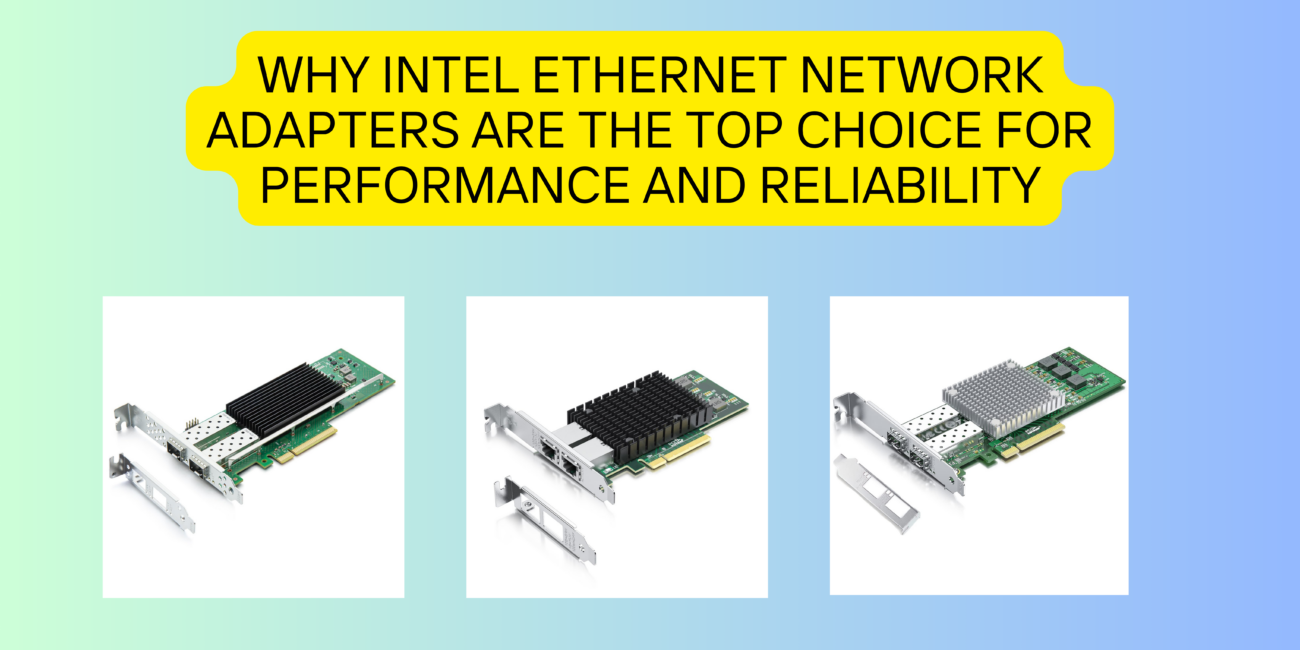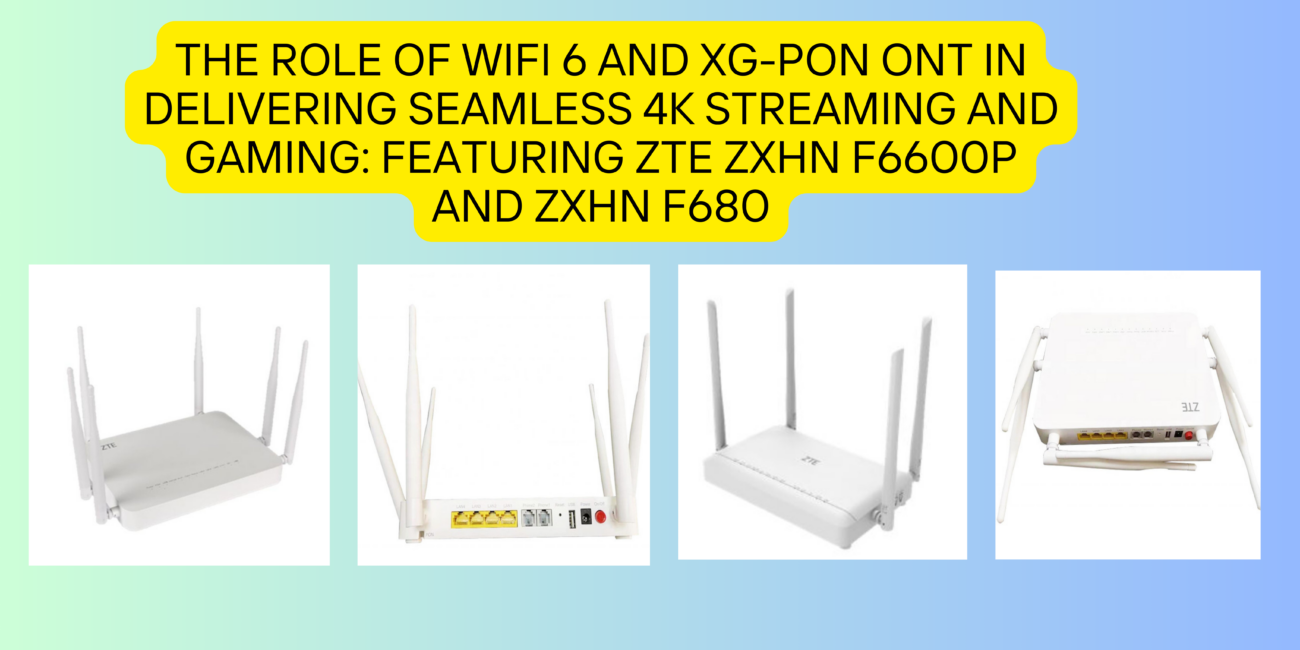When setting up a server or upgrading your networking infrastructure, choosing the right Ethernet adapter is crucial for ensuring optimal performance, stability, and scalability. The correct Ethernet adapter can make a significant difference in network speed, data transfer efficiency, and overall system performance. Among the various options available, some of the most popular and reliable choices include the Intel X520 DA2, QLogic QLE 2562, Mellanox MCX516A, and Broadcom 9300. This comprehensive guide will help you navigate through these options and highlight key considerations such as speed, compatibility, cost, and specific features to help you choose the right Ethernet adapter for your server needs.
1. Understanding the Importance of Ethernet Adapters for Servers
Ethernet adapters are essential for connecting your server to a network. They manage the flow of data between the server and external devices or networks, such as switches and routers. The right Ethernet adapter ensures that your server can handle the desired traffic volume and network protocols efficiently.
When selecting an Ethernet adapter for your server, you must consider several factors, including speed, compatibility, price, and advanced features such as support for Virtual LANs (VLANs), RDMA (Remote Direct Memory Access), and offload capabilities. Let’s break down how each of these factors influences your choice of Ethernet adapter.
2. Key Considerations for Choosing the Right Ethernet Adapter
a. Speed: 1GbE vs. 10GbE vs. 25GbE vs. 100GbE
The speed of an Ethernet adapter plays a pivotal role in determining how much data can be transferred between your server and the network at any given time. For most general use cases, 1GbE or 10GbE adapters are sufficient. However, for modern data centers or high-performance computing tasks, 25GbE and 100GbE adapters are recommended.
- Intel X520 DA2: This 10GbE Ethernet adapter offers excellent performance for servers that require medium to high-speed connectivity. It’s suitable for applications like virtualization and database management that require high-throughput and low-latency networking.
- QLogic QLE 2562: Designed for 16Gb FC (Fibre Channel), this adapter is commonly used in SAN (Storage Area Network) environments but also provides excellent support for Ethernet networking, making it versatile for certain hybrid setups.
- Mellanox MCX516A: This is a 25GbE Ethernet adapter designed for high-throughput applications, making it a great choice for servers that handle data-intensive workloads such as cloud computing, machine learning, and AI-driven tasks.
- Broadcom 9300: A 25GbE Ethernet adapter, it is ideal for enterprise-level deployments requiring high bandwidth and fast data transmission between servers and network devices.
b. Compatibility: Ensuring Seamless Integration with Your Server Hardware
Compatibility is crucial when selecting an Ethernet adapter. Make sure that the adapter you choose is supported by your server’s motherboard, chipset, and operating system. Additionally, check whether the adapter supports the right type of ports (e.g., SFP+ for 10GbE or 25GbE).
- Intel X520 DA2: Known for its broad compatibility with most modern servers and operating systems, including Windows and Linux. It is well-suited for general-purpose networking and virtualization tasks.
- QLogic QLE 2562: This adapter is highly compatible with enterprise SAN and server environments that use Fibre Channel for storage networking. While it is not primarily designed for Ethernet-based networks, it can be part of a hybrid infrastructure.
- Mellanox MCX516A: It is compatible with servers designed for high-performance computing and cloud environments. Mellanox also supports various technologies like RDMA, which can be critical for latency-sensitive applications.
- Broadcom 9300: Broadcom’s 25GbE Ethernet adapter is compatible with a variety of enterprise-grade servers, especially in high-demand environments such as large-scale data centers and cloud infrastructures.
c. Price: Balancing Performance with Budget
The price of an Ethernet adapter can vary greatly depending on the speed, features, and brand. Higher-speed adapters, such as 25GbE and 100GbE, tend to come with a higher price tag. However, they offer long-term scalability, which can justify the cost in environments where high-speed networking is critical.
- Intel X520 DA2: Priced competitively for a 10GbE adapter, the Intel X520 DA2 provides solid value for those who need reliable, high-speed networking without breaking the budget. It is often considered a budget-friendly choice for most medium-sized enterprises.
- QLogic QLE 2562: Typically more expensive than basic Ethernet adapters, the QLogic QLE 2562 is designed for specialized use cases in storage networking. It’s a great option for data centers where Fibre Channel connectivity is a priority.
- Mellanox MCX516A: Being a 25GbE Ethernet adapter, it comes at a higher cost than 10GbE adapters. However, its ability to support RDMA and low-latency data transfer justifies the investment for environments requiring high performance.
- Broadcom 9300: As a 25GbE Ethernet adapter, the Broadcom 9300 is priced moderately, offering good performance for its price range. It’s an excellent choice for those looking to scale their infrastructure while maintaining cost-efficiency.
d. Advanced Features: Enhancing Server Networking Performance
Advanced features such as RDMA, TCP offload, iSCSI, and VLAN support can significantly improve server networking performance by reducing CPU overhead and increasing throughput.
- Intel X520 DA2: This adapter supports iSCSI, VLANs, and TCP offload, making it a solid choice for general-purpose server applications that need reliable network performance without extra CPU load.
- QLogic QLE 2562: While this adapter excels in Fibre Channel environments, it also supports advanced offloading and network features that help reduce latency and improve efficiency, especially for storage networks.
- Mellanox MCX516A: Known for its support of RDMA and RoCE, the Mellanox MCX516A is ideal for environments requiring high-performance networking, particularly in cloud and AI workloads where low latency is crucial.
- Broadcom 9300: This adapter supports a range of advanced features, including RDMA, iSCSI, and VLANs, making it suitable for large-scale server environments and demanding applications that require high throughput.
3. Performance for Different Server Use Cases
Depending on your server’s role, different Ethernet adapters will offer varying levels of performance:
- For general-purpose servers that handle standard networking tasks, the Intel X520 DA2 is an excellent choice. It provides 10GbE speeds and is compatible with a wide range of servers and applications.
- In environments that require more bandwidth for data-intensive applications such as virtualization, cloud computing, or big data analytics, the Mellanox MCX516A and Broadcom 9300 are ideal with their 25GbE speeds and support for RDMA.
- For storage area network (SAN) configurations, the QLogic QLE 2562 offers specialized support for Fibre Channel and can deliver enhanced performance for diskless server environments or where high storage throughput is required.
4. Conclusion: Making the Right Choice for Your Server Ethernet Adapter
Selecting the right Ethernet adapter for your server depends on several factors including speed, compatibility, price, and advanced features.
- Intel X520 DA2 is perfect for general-purpose servers requiring reliable 10GbE networking at a competitive price.
- QLogic QLE 2562 is ideal for Fibre Channel networks or hybrid environments with storage networking needs.
- Mellanox MCX516A and Broadcom 9300 are excellent choices for high-performance servers that require 25GbE networking, RDMA support, and low-latency connectivity.
By evaluating the speed requirements, budget, and specific server needs, you can confidently choose the best Ethernet adapter for your server infrastructure.

